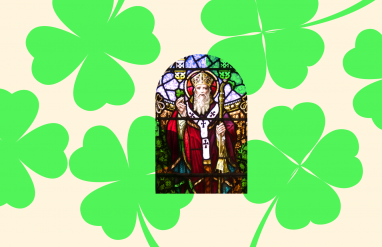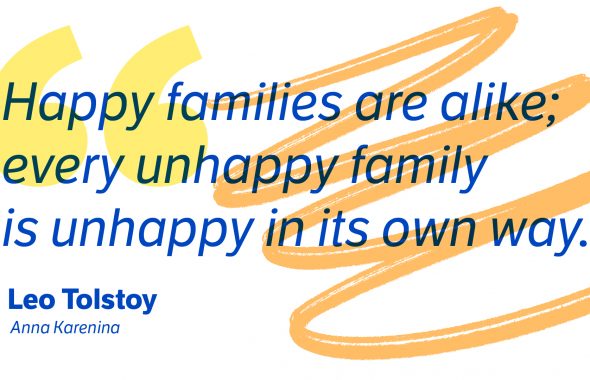5 … 4 … 3 … 2 … 1 … Happy New Year! As we all know, the first day of the new calendar year is when we pop the champagne, blow up fireworks, and make a resolution that we will inevitably never actually accomplish. But why do we do all of these things? You might be surprised to learn that there are reasons behind all of these New Year’s traditions that often go back pretty far.
In fact, countries all over the world have many interesting traditions and ways to celebrate the beginning of the new year. We resolved to find out the stories behind many of the New Year’s Eve traditions out there, and this is one resolution that we managed to succeed at! Now, we just need to get to the gym … eventually … we promise …
resolutions
The ever-popular but rarely successful act of making New Year’s resolutions is a lot older than many might think. Over 4,000 years ago, the Babylonians made promises to the gods as part of Akitu, a festival that celebrated the new year. The promises often involved things like paying debts or returning borrowed farming equipment. The Babylonians were motivated to actually fulfill these promises because nobody wants to break a promise to a god.
The ancient Romans had a similar practice of making New Year’s promises to Janus, a two-faced god whose name would give us the month of January. Later Christians would view the celebration of the new year as a time to improve oneself spiritually and vow to do better in the following year. Today, resolutions are not the religious act they once were, and most people make promises to themselves rather than a deity.
Times Square ball drop
The tradition of dropping a giant fluorescent ball in New York City to celebrate the new year can be traced back to a newspaper boss. In 1907, New York Times publisher Adolph S. Ochs hired sign-maker company Artkraft Strauss to build a large, extravagant ball that could be lit up and lowered to celebrate the beginning of 1908. The first ball designed by builder Jacob Starr was made of iron and wood, and weighed around 700 pounds.
According to the official Times Square website, the New York ball and other New Year’s Eve ball drops can be traced back to “time balls” used since the early 1800s; a large ball over an observatory or other tall building would be lowered at a specific hour to help traveling ship captains tell the time. Time balls are now a thing of the past, but their legacy continues through the yearly celebration at Times Square.
Make some noise!
Whether they twirl noisemakers, blow up fireworks, or bang on pots and pans, people the world over often celebrate the new year by making a big racket. There actually seems to be a reason behind the cacophony (besides excessive alcohol consumption): ghosts. In ancient China, it was said that evil spirits would look for victims during the coming of a new year. According to legend, these evil spirits could be scared away with noisy fireworks. Over time, we all kept the noise and the fireworks but became less afraid of ghosts. That being said, the ghost-scaring tradition is still alive and well in the Philippines, where New Year’s Eve revelers often shoot off fireworks, blare car horns, or bang on pots and pans to scare away malevolent spirits.
Each of those dazzling fireworks have names. Learn what your favorite sparkler in the sky is called.
“Auld Lang Syne”
“Auld Lang Syne” is that New Year’s song that everybody loves to sing but nobody knows the lyrics to. The popularity of this song and its association to New Year’s Eve is credited to Canadian musician Guy Lombardo. Lombardo and his band, the Royal Canadians, performed the song on the radio on December 31 beginning in 1929 and continued to do so for decades.
Lombardo learned of the song when he was a teenager and heard it sung by Scots who lived near his hometown in Canada. “Auld Lang Syne” is actually a Scottish song with lyrics written by Scottish poet Robert Burns. When translated literally from Scots, auld lang syne means “old long since.” The song never actually mentions New Year’s Eve, but its themes of joy and regret fit the holiday pretty well. (If you’d like to serenade your family Lombardo style this year, you can find the lyrics and more of the song’s history here.)
Pop the champagne!
Getting drunk on New Year’s Eve, or any other holiday for that matter, is a tradition that is as old as time. But why and when did champagne become the drink that people imbibe at this time? Hundreds of years ago, champagne was an extremely expensive drink that only the wealthy and elite could afford to buy. It was the drink of choice to bring to ritzy dinner parties while doing fancy rich people stuff.
By the 1800s, improved technology made champagne production easier, and people were making more money thanks to the Industrial Revolution. The middle class could afford to buy champagne as a drink for special occasions. At first, champagne was just one of many alcoholic drinks found on New Year’s Eve, but its reputation as a luxurious drink for festive moments would allow it to win out. We have been popping corks on New Year’s Eve ever since.
New Year’s kiss
According to most sources, the New Year’s smooch can be traced back to ancient English and Germanic folklore. It was the belief at the time that kissing your loved one would guarantee a year full of love and romance. Alternatively, kissing a stranger would ensure you would find love in the coming year, possibly even with the stranger you just kissed. The tradition was kept alive at masquerade balls and has been popularized in modern times by dramatic New Year’s Eve kisses in popular movies. (“When you realize you want to spend the rest of your life with somebody…”)
burning scarecrows
In Ecuador, it is a popular tradition to celebrate the new year by setting fire to a scarecrow-like doll called a monigote or el año viejo (literally, “the old year”). The tradition is said to represent getting rid of regrets or letting go of the bad things from the previous year. In recent times, it has become popular for children to design the effigies after cartoon characters or superheroes. For the adults, the effigies may often resemble people they don’t like, such as political figures or members of hated sports teams, for exactly the reasons you would expect.
12 lucky grapes
In Spain and Spanish-speaking countries, a common New Year’s challenge involves attempting to eat 12 green grapes before a clock finishes tolling 12 times to signal midnight. It is said that if a person is able to complete the challenge successfully, they will be blessed with good luck throughout the new year. Based on newspaper evidence, this challenge seems to have begun during the 1880s. At the time, the Spanish upper crust copied the French tradition of eating grapes while enjoying champagne. The lower classes were amused by this display and began mocking the rich by eating grapes, too. From there, we can only assume that competitive spirit and/or merry drunkenness took over and led to the creation of the grape-gobbling challenge.
What color is your underwear?
In countries around the world, traditional advice says that the color of your New Year’s underwear will determine your fate in the upcoming year. For example, red is often considered the luckiest color and is usually tied to romance and love. Depending on the country, the other colors have different meanings as well, such as yellow being the color for wealth and success. The exact origin of this tradition is unknown, but a popular theory says it dates back to the Middle Ages. According to this theory, men wore red cloth or sashes over their nether regions to protect their private parts from witches, who were said to be at their most nefarious during the beginning of the new year.
Hogmanay
Hogmanay is the Scottish word for New Year’s Eve, and it refers to a huge celebration that rivals even the festive juggernaut that is Christmas—in Scotland, at least. In Scotland, Hogmanay festivities often begin well before the day and in some places consist of several days of events, such as parades and nighttime processions, street parties, bonfires, and music and dance gatherings known as ceilidhs. The holiday is associated with a number of customs, including the so-called first-foot traditions. In particular, according to Hogmanay tradition, a dark-haired man crossing the threshold of a house at midnight will bring good luck.
The name Hogmanay has unclear origins, but it may come from the Norman French hoguinane, from Old French aguillanneuf, meaning “the last day of the year.” It’s believed many of the Hogmanay traditions originated from Viking folklore and religious practices brought over in the 8th and 9th centuries.
Learn more about Hogmanay and other Scottish words you’l want to start using here.
dancing bears
In Romania, the new year is celebrated by men, women, and children donning bear costumes or bear furs and dancing to pan flute music at festivals held between Christmas and New Year’s Day. The bear-dancing tradition is traced back to the city of Comanesti, where the bear dance festival is still a major celebration today. Through these festive activities, Romanians connect with religious practices of centuries ago, when rituals involved animal masks or costumes as a way to ward off evil spirits. The bear in particular was considered a sacred animal by ancient Romanians, so it is no surprise that it became the focus of the celebration over time.
pouring lead to predict the future
In Germany, it is tradition to celebrate the new year by engaging in some good ol’ fashioned Bleigiessen, or “lead pouring.” According to German tradition, a person can melt lead (or, in modern times, a less poisonous metal) into a container of cold water to predict the future. The belief is that the shape taken by the melted metal will indicate what awaits in the coming year. For example, an arrow shape means that you will find your direction in life, and a cat shape means you will be spoiled and pampered—because of course it does. Interestingly, the practice of using molten metal to predict the future, which is known as molybdomancy, may have been practiced all the way back in ancient Greek or Roman times.
Take our quiz!
Now that you’ve read through the list, do you feel prepared for a little challenge? Resolve to take our short quiz on these traditions then! We might even say there’s no better way to start the new year.














